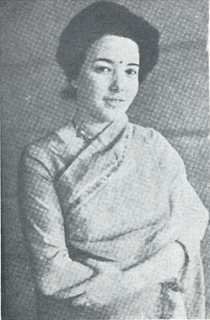Netaji Subhas Chandra Bose's Azad Hind Fauj (INA) and the Railways
Netaji Subhas Chandra
Bose's Azad Hind Fauj (INA) and the Railways
But the INA did use the
Railways as a means of transport for dispatching their troops in various
campaigns in Burma
The advance parties
of Regimental Headquarters and the two battalions viz. No 2 and 3 Battalions
moved to Rangoon by the train to Mandalay on 4th and 5th February, 1944 but on
the way owing to the railway bridges being blown by enemy aircraft the men had
to cover considerable distances on foot [...] Later the INA troops from
Mandalay left for Kalewa in Burma near the Indian border in parties of
approximately of 300 men and performed the journey from Mandalay to Yeu in
Burma by train and on foot. [...] From Tamu to Humine and Ukhrul in Manipur and
then to Kharsom and Kohima on arrival our men hoisted the trilcolour on the
lofty mountains around Kohima....
The British former
Intelligence Officer Hugh Toye in his well-known classic Subhas
Chandra Bose :The Springing Tiger (1959)
prefaces the departure of INA troops by rail with an exciting background:
Bose arrived Rangoon
with the key members of his Headquarters and Cabinet on January 17th, 1944 and
he discussed with the Japanese Commander-in-Chief General Kwabe the coming
invasion of India, for already the Subhash Regiment was preparing to move
forward. He saw his national flag planted at Imphal, Kohima even on the banks
of the Brahamputra and the people of India India
On 3rd February he
bade farewell arousing them by his inspiring call: 'Blood is calling. Arise! We
have no time to lose. Take up your arms [...] The road to Delhi
is the road to freedom (Delhi
The regiment left
for the front during the next three days and Netaji watched their trains move
and he could not withhold his tears..."
Further:
...during March as
the 2nd and 3rd regiments of the INA prepared their progress to Imphal, he
again strove by speeches, inspections and personal contacts to foster their
morale and heighten confidence. The move northwards from Rangoon Rangoon to Mandalay
Japanese troops and the
INA crossed the Indian Frontier on 19th March. On 7th April, 1944 the Imphal
Campaign was being launched with his own troops who were either involved in it
or moving towards the front. Bose set up a small headquarters in the little
town of Maymyo near Mandalay
Later Bose and his men
would cover the weary marches from Rangoon into Siam (Thailand Moulmein Saltong
River
The above descriptions
of train journeys of INA troops are sketchy from the point of view of an ardent
rail fan as these do not give any idea of type of trains travelled by, their
composition, marshalling, locomotives used and the details of their time tables
and crew particulars, etc. Obviously this is because these narratives are by
historians and not by rail historians, but maybe some day more descriptions of
trains and railways the INA used will be available to us by researchers. All
the same, luckily I could find a somewhat better idea of some of such troop
trains in Peter Ward Jay's comprehensive and more balanced history of the INA
in his The Forgotten Army -- India 's
Struggle For Independence Burma via Siam
(Thailand Moulmein Burma and Thailand Moulmein
Thus by and by, the
middle of May, 1945 saw Lt. Janaki Devar and her women's regiment of about a
hundred and a total of about sixteen thousand other men troops reach Bangkok
safely.
The Indian Railways
paid their homage to Netaji by having started a train called Azad Hind Express
between Howrah Delhi
on way to Peshawar disguised as an insurance
agent on to his legendary escape to Afghanistan
from his virtual house arrest in Calcutta
Material provided by BMSBisht ,
Copyright © 2010Note: This site is not officially affiliated with Indian
Railways! The official web site of Indian Railways is: http://www.indianrailways.gov.in
Blog Note: [ This is non-comercial circulation for the knowledge of people of India ]


Comments
Post a Comment